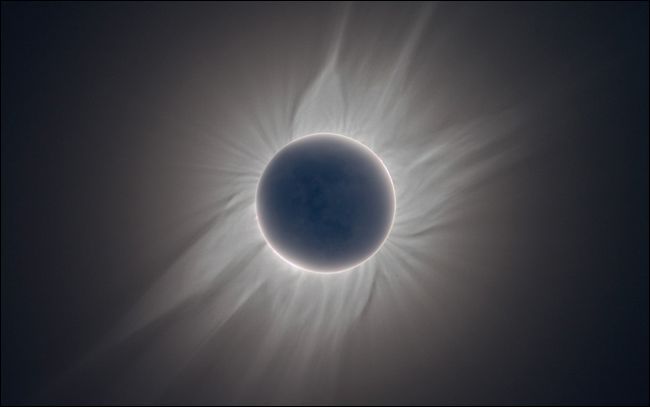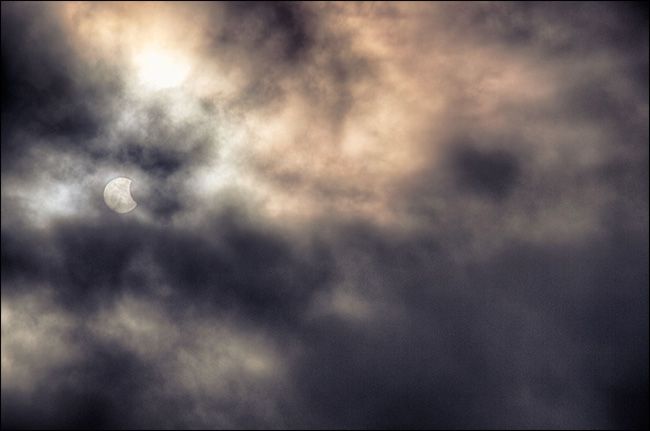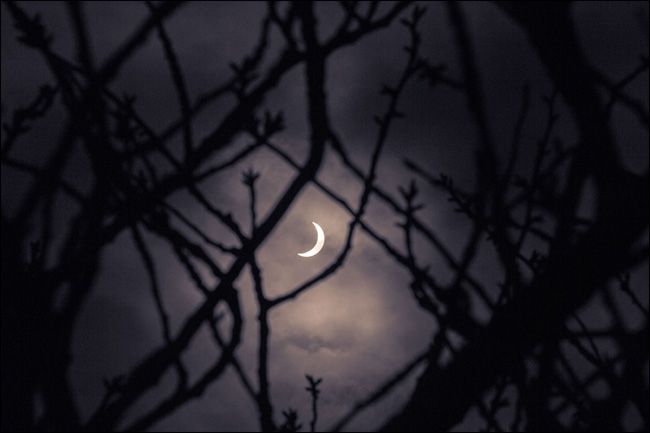On the August 21st, 2017, North America is going to experience a solar eclipse. It’s the best eclipse in 99 years, with the path of totality—the area where the sun is totally blocked by the moon—extending from Oregon to South Carolina. Even outside of that narrow swathe, the eclipse is going to look pretty special.
While eclipses aren’t strictly once-in-a-lifetime events (I’ve seen two decent partial ones), they are rare, and ones this good are really rare. They’re also hard to photograph well. This means that, for the most part, you’re better off not taking photos of an eclipse. Sit back and watch it (safely). You’ll enjoy the experience more without faffing about with a camera.
But if you really want to take photos of the eclipse, here’s what you need to know.
What Makes a Good Eclipse Photo
Professional astrophotographers chase eclipses around the world. They combine multiple exposures to draw out all the details of the suns’ corona. There is a huge amount of work that goes into shots like the one below, or this even more incredible one by Miloslav Druckmüller, Peter Aniol, and Vojtech Rušin. Yes, one eclipse photo took three people and two cameras to make.
This sort of photo is beyond the scope of this tutorial (and my ability to teach, for that matter). Instead, I’m going to look at how you can safely photograph the eclipse, especially when you’re only viewing a partial one, as the majority of the people in North America will. Put simply, a good eclipse photo for most people will be one that shows the eclipse and doesn’t damage your gear or blind you while you take it.
The Technical Stuff
The sun and moon are surprisingly small in the sky. This means that you'll want a telephoto lens to zoom in close enough to get a good photo. Somewhere around 200mm on a full-frame camera will work, although 300mm or more will give you better images. If you’re using a crop sensor camera, this means you want something from 120mm, or ideally, longer than 200mm. To test it out, take a photo of the moon at night. For obvious reasons, it will be the same size as the eclipse.
Keeping a camera steady with a big telephoto lens is tricky, especially if you’re excited or there are people milling about. This means you’re going to be better off with a tripod. It won’t be impossible without one, but it’s always a good idea to use one when you can.
Except for during the moment of totality, the sun is bright enough to damage your camera sensor. Just as you need to protect your eyes to view the eclipse, you also need to protect your camera. To do this, you can get either place a solar filter sheet in front of your lens or get a dedicated solar filter.
You can use a strong neutral density filter, but it’s not something we can really recommend. If you decide to go this route, you are taking risks with your equipment. The filter would need to be at least 9 or 10 stops, and you should never observe the sun through the viewfinder even with the filter on. Instead, use live view to focus and frame your shot. The photos you get won’t be as good as if you used a dedicated solar filter.
The camera settings depend on what gear you’re using, what the weather is like, and how close to totality you are. Start by setting your camera to an aperture of around f/16, an ISO of 100, and the fastest shutter speed it can. This will normally be 1/4000th or 1/8000th of a second. Take a test photo and slowly shorten the shutter speed or open the aperture until you have a photo you are happy with.
I took the shot above with a shutter speed of 1/4000th and an aperture of f/8 on a cloudy day with a 9 stop neutral density filter on the lens. As you can see, it’s quite a poor photo; I had originally intended to shoot with a model that day but she cancelled last minute so I had to make do. I would have been much better off with a solar filter.
Other Tips and Tricks
Shooting solar eclipses well is really hard, but that doesn’t mean there aren’t other ways to get great eclipse photos. Turn your camera around on the people viewing the eclipse and document that. Take some portraits with the spooky eclipse light. Shoot a landscape with the eclipse as a small part of the image. There are plenty of options to do something interesting, and for these, you could even use your smartphone.
Again: even if you’re using a proper solar filter, avoid looking through the viewfinder. Use live view to focus and frame your shots. It’s safer.
The eclipse moves through the sky. You will need to adjust your camera on the tripod to shoot the whole eclipse.
If you’re lucky enough to be in the path of totality, you can remove the solar filters for the two minutes the sun is totally blocked. Be careful though; even a tiny bit of the sun poking out from behind the moon can be enough to damage your eyes or your gear.
Enjoy the experience. This is a rare event, so don’t get caught up in trying to take a perfect photo. Odds are you’ll fail, and won’t have a good time. Relax, observe the eclipse, and have fun.




